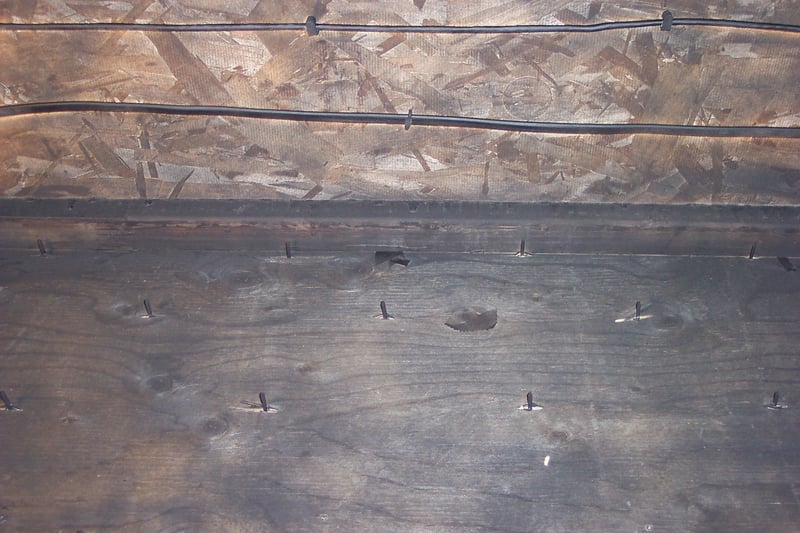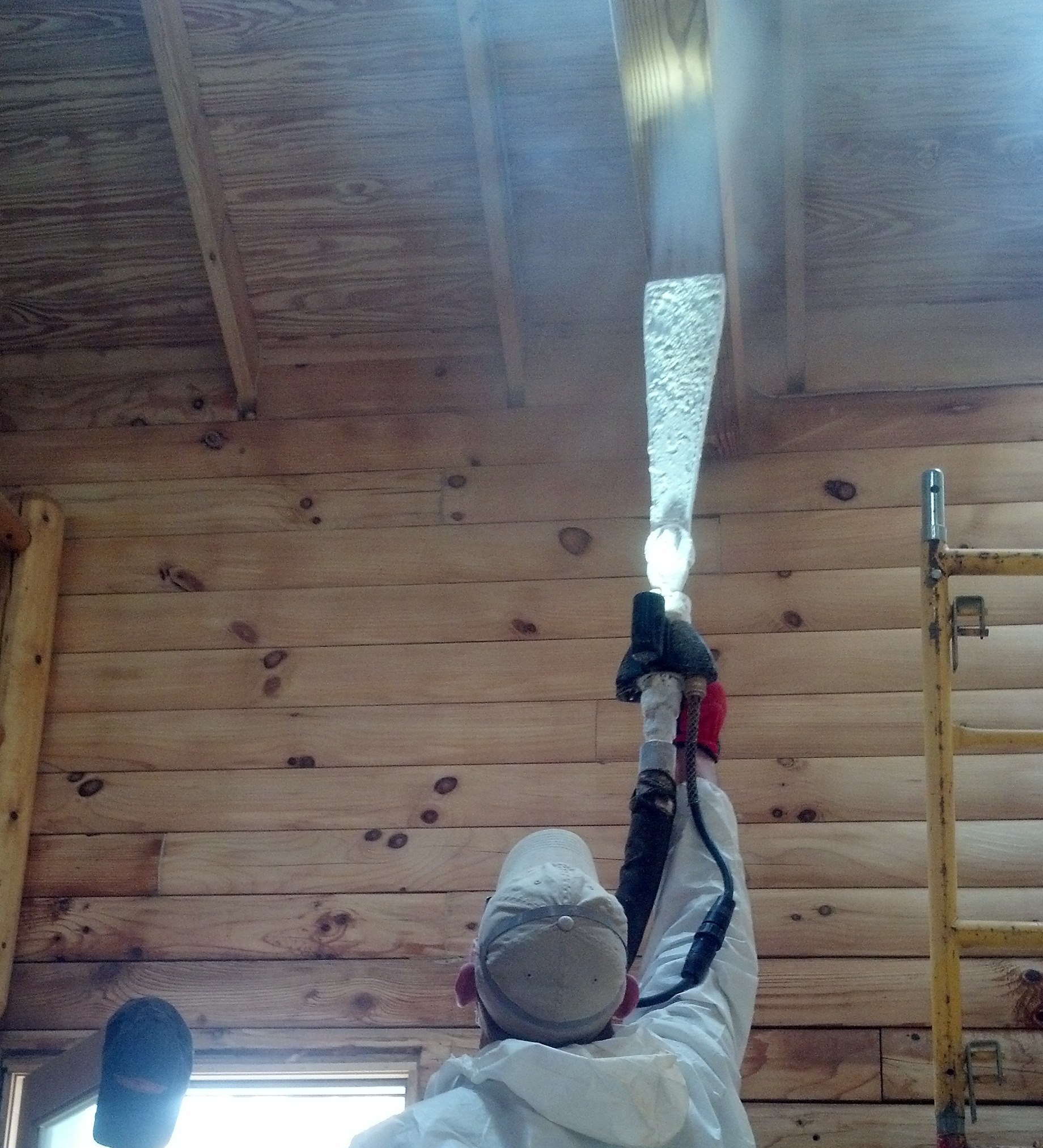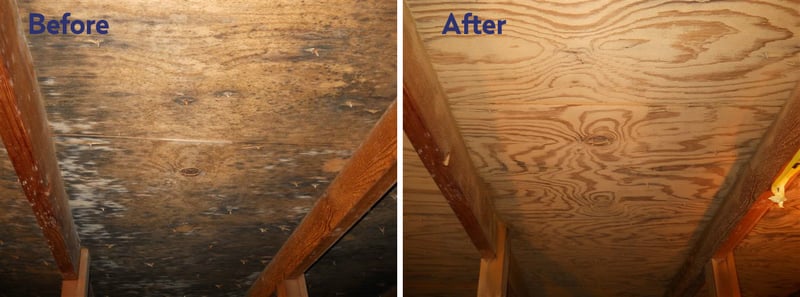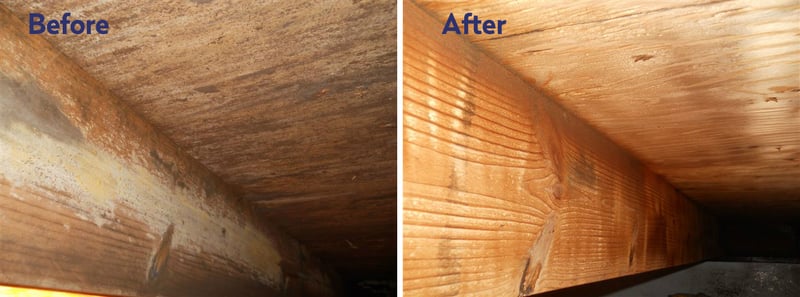.jpg?width=800&name=Blasting%20on%20Stomach%20-filter%20(1).jpg)
When a homeowner detects a mold problem, it is never a pleasant experience, especially in a relatively new home. Newer homes are much more susceptible to mold issues than older homes.
Older homes are more resistant to mold growth because most were built with better construction techniques, materials and lumber than newer homes.
Dr. Neal Adrian, owner of Adrian Environmental, holds a Ph. D. in Microbiology from the University of Oklahoma and is very familiar with mold remediation.
“An older home can hold up to 500 gallons of moisture without any damage or mold issues,” said Dr. Adrian. “However, newer homes can only absorb about 50 gallons of water before mold begins forming. So it is not unusual for homes that are just five years old to see mold growth.”
 While mold growth is a source for indoor air quality issues, if left unchecked it can also lead to wood rot and become a structural problem.
While mold growth is a source for indoor air quality issues, if left unchecked it can also lead to wood rot and become a structural problem.
The areas where mold issues most frequently arise, which is in crawl spaces and attics, are typically the most difficult areas to remove the mold from.
These areas are hard to reach and often contain tight recesses and uneven surfaces, which makes it difficult to fully remove the mold.
Traditional methods of removing mold, such as manually scrubbing and sand or soda blasting, are time consuming, tedious and create harmful secondary waste, which must be collected and disposed of.
These methods will also typically require disinfectants, biocides and cleaning solutions to be used during cleaning to fully remove the mold. These chemical solutions are harmful to both the environment and the health of the homeowners and the workers applying them. They can also add moisture back into the wood, which makes it harder to apply mold resistant sealants after the cleaning.
Read about how dry ice blasting compares to other cleaning methods

The Solution: Dry ice blasting
When it comes to difficult mold remediation jobs, Dr. Adrian and his team use the dry ice blasting process.
Dry ice blasting is similar to other media blasting methods, such as sand blasting or soda blasting, where media is accelerated in a pressurized air stream to impact a surface. Instead of using a hard, abrasive media to grind on a surface and potentially damage it, dry ice blasting uses soft, recycled CO2 pellets. The dry ice is accelerated at supersonic speeds and creates mini-explosions on the surface to lift the mold off the affected area.
Unlike other media blasting methods, dry ice blasting:
- Does not leave any secondary waste
- Eliminates exposure of harmful chemicals
- Is non-toxic
- Does not add moisture back to the wood
Learn more about what dry ice blasting is
The Results
The team at Adrian Environmental was recently asked to clean a 1,620 square-foot attic that had very heavy mold growth over 80% of the sheathing.
100% of this mold growth was removed using dry ice cleaning from Cold Jet, and in just one pass with the applicator.
“If we had instead used chemical removal, the cleaning would have required two passes, with a third pass to remove staining from stubborn areas,” Dr. Adrian said. “Cleaning with chemicals would have added an additional day of cleaning to the overall job. In addition, there would have been staining remaining in the areas with the heaviest mold growth.”

Dry ice blasting allows Dr. Adrian’s team to easily access tight areas in hard to access attics. The process is most effective when it comes to cleaning around the shingle nails that poke through the roof. Dry ice blasting completely removes the mold from these areas.
In a separate project in a crawl space, Dr. Adrian’s team tackled 1,225 square feet of mold growth. It took two days to remove the mold, versus the three days that would have been spent using a chemical treatment.
“Had we not used dry ice cleaning, the crawl space – including the floor joists – would have been a wet mess from the cleaning solution,” said Dr. Adrian. “The surface of the wood would have been less than ideal for later applying the mold resistant coating. A huge advantage with dry ice cleaning is that it doesn’t add moisture to the wood components, which is what is facilitating the mold growth in the first place, plus the dry ice blasting better prepares the surface for later application of the mold resistant coating.”
Learn about dry ice blasting for mold remediation

.png) English
English